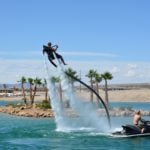On December 18, 2022, passengers on board United Flight 1722, traveling from Maui, Hawaii, to San Francisco, California, were seconds away from crashing into the Pacific Ocean when suddenly, the plane was pulled up back into the air.
Last week, the National Transportation Safety Board finally released a detailed report on the incident, which stated that the plane came within 748 feet of the ocean’s surface. Apparently, during takeoff, the plane’s flaps were set incorrectly due to a miscommunication between the captain and the copilot.
Although it seems insignificant, with the flaps at the wrong angle, the plane started descending quickly toward the ocean. Luckily for everyone on board, the plane’s ground-proximity-warning system kicked in and warned the pilots just in time.
The pilots were able to safely pull the plane back up into the air and out of danger, but passengers reported that the ten-second drop toward the sea was absolutely terrifying. Some said it felt like a rollercoaster, and many reports state that passengers were audibly praying to whichever god they believed in.
Luckily, everyone on board is alive and well. But the National Transportation Safety Board (NTSB) still decided to run a full report, albeit several months later. The NTSB says that the incident didn’t require immediate attention, seeing as that the plane functioned properly and everyone was okay.
However, Anthony Brickhouse, a former investigator with the NTSB, spoke directly to the press about the situation and, specifically, his concerns with the length of time it took NTSB to investigate.
He explained that although the pilots had enough time to pull up the plane thanks to the ground-proximity-warning system, the situation was undeniably dangerous. In his interview, he stated, “It’s concerning as a safety professional and investigator that two months went by before the accident investigation board of the country found out about it.”
While Brickhouse is openly critical of the NTSB’s response to the situation, he does state that the organization, as well as the Federal Aviation Administration’s plan to require more cockpit recording, is a great step forward.
He hopes that this technology will help avert and investigate future issues quickly and efficiently to ensure that every flight, pilot, and plane has the equipment and training they need to handle any disaster.
According to the NTSB, what happened on United Flight 1722 wasn’t anyone’s fault. Both the captain and the co-pilot had a combined 25,000 hours of flight time before the flight and handled the near-disaster as well as anyone could have.
United Airlines has not yet responded to the recent report from NTSB. Though when the incident occurred last December, the company stated that the pilots reported the situation when they landed in San Francisco, so they were fully aware of the near-disaster.
Though it was the ground-proximity-warning technology that really saved the day. If it hadn’t worked properly, this story would have had an extremely different and much more tragic ending.
































